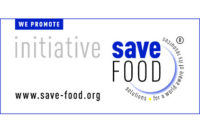In mid-March, Food Business News issued a worrisome statistic for food industry executives: Unit sales in 14 of the top 20 packaged food categories (bread, soup, baby formula, canned/bottled fruit, shortening, etc.) declined 3% or more in the past 52 weeks at mid-market FDM (Food, Drug, Mass) retailers, according to SymphonyIRI data. This comes on the heels of reports from several major food companies stating at a consumer analyst meeting that they had experienced sustained volume declines in their core businesses in the past year.
Literally days after the announcement was published, Nielsen announced a webinar on the rise of the perishables sector. Apparently, it seems that perishables and fresh food in general, are gaining share of grocery dollars—and have been for years.
Surprisingly, even experienced food industry analysts seem to think there’s something new going on and are struggling to understand ‘why’ it’s happening, notes The Hartman Group. These are the same analysts who continue to track (and cite) only FDM sales trends. By staring at the middle of the market, they’re not seeing “the entire forest,” says The Hartman Group. Packaged foods are actually growing very well downmarket, in dollar stores, convenience stores and in stores such as Aldi. And they are growing well upmarket, where fresh, high-quality packaged brands are the dominant driver of sales.
But The Hartman Group says a more important trend is driving the long-term volumetric decline in mid-market packaged foods sales. Consumers are increasingly moving dollars away from packaged food as a whole. Long before the recession, savvy consumers were already figuring out that the best local prepared foods departments offered a better value than take-out restaurant food, says The Hartman Group. Upscale grocers like Whole Foods and Trader Joe’s were especially good at developing loyalty around this one department. Whole Foods Market did it by selling fresh, unpackaged take-out. Trader Joe’s did it by packaging and branding restaurant-quality refrigerated meals. And the latter is perhaps most evolved in their commissary-packed, refrigerated meals business.
The group says that an aggregate shift away from packaged food began long before now and even long before the recession began. Volumetric trends from 2003 until 2009 point to fresh food (i.e., raw fruits, raw vegetables, grains) steadily growing while packaged food (everything in a package) has been steadily, inexorably declining, it says, adding that while most companies would look for category-level causes for volumetric decline in big packaged food categories, the problem is really cultural: Food culture is changing in a long-term manner that packaged food companies have yet to truly accept.
Troubling food industry statistics?



